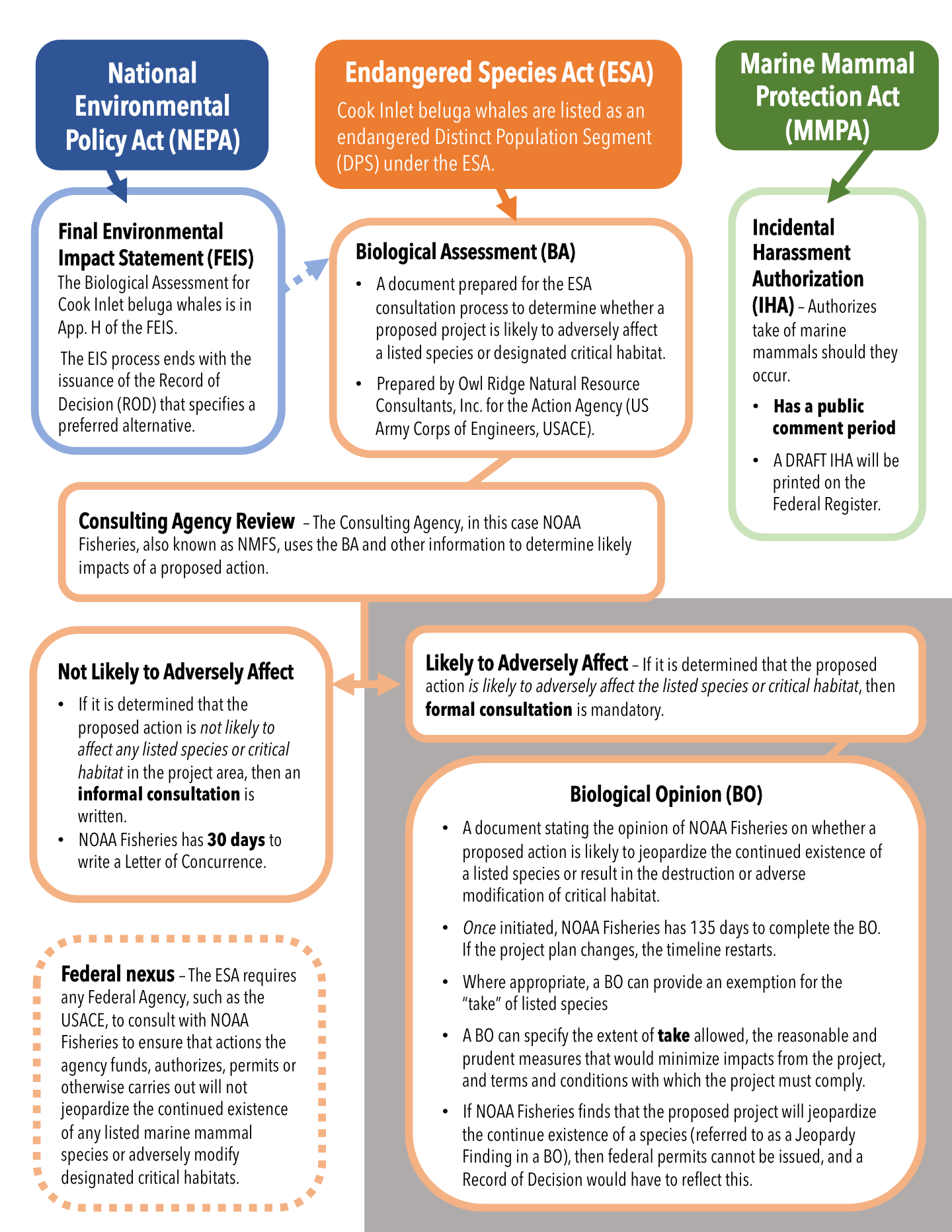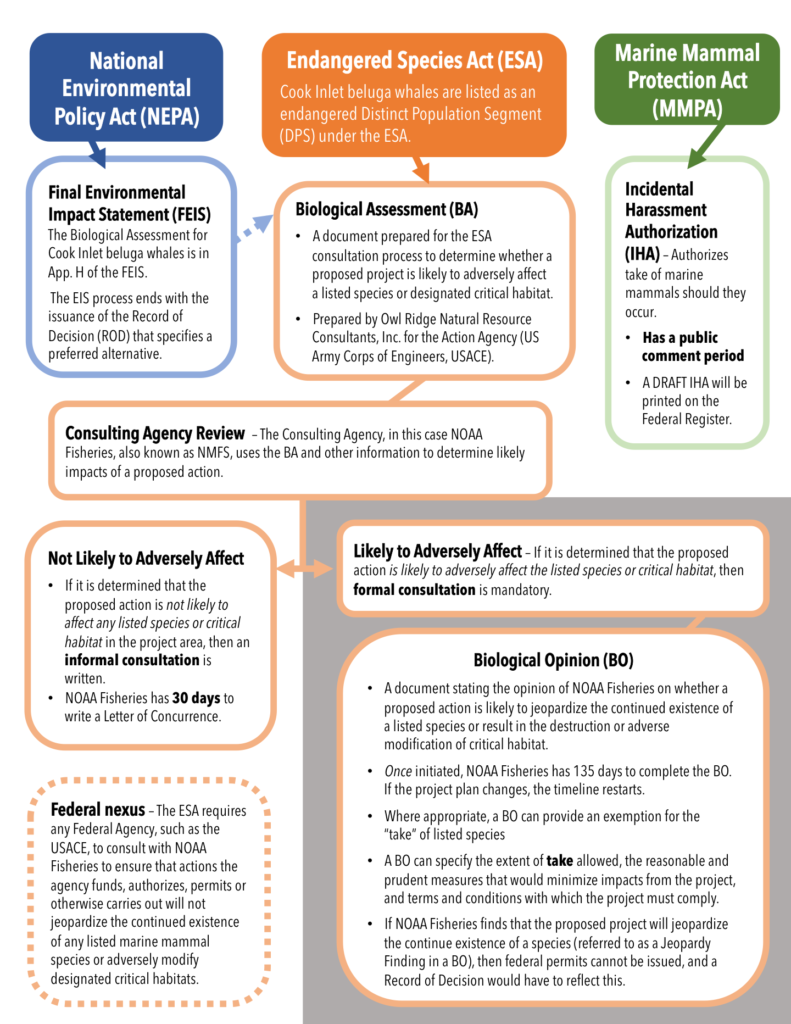
Since the U.S. Army Corps of Engineers (Corps) published the Final EIS for the Pebble project in July, it has been working on all the items it needs to complete before issuing a Record of Decision on the project. That list is long and the process can be complex as the Corps works with the State of Alaska and other agencies.
Pebble’s compensatory mitigation plan, due to the Corps by November 18, is one of the most highly anticipated components. But it won’t be the last. The Corps needs to work with federal agencies related to twelve species that are listed as threatened or endangered under the Endangered Species Act (ESA) that occur in the action area.
Formal Consultation
Earlier this year, the Corps entered what’s called “formal consultation” with both the U.S. Fish and Wildlife Service (USFWS) and with NOAA Fisheries (also known as National Marine Fisheries Services, or NMFS). The USFWS has jurisdiction over three species that are Threatened under ESA: Spectacled Eiders, Northern Sea Otter and the Short-tailed Albatross. NOAA Fisheries has jurisdiction over nine marine mammals – including eight species of whale and Steller sea lions – that are protected under ESA.
During formal consultation, each agency writes a “Biological Opinion,” which is a document stating its opinion whether a proposed action is likely to jeopardize the continued existence of a listed species or result in the destruction or adverse modification of critical habitat.
Where appropriate, it can provide an exemption for the take of listed species. Take means to means to “harass, harm, pursue, hunt, shoot, wound, kill, trap, capture, or collect, or to attempt to engage in any such conduct.”
A Biological Opinion can specify the extent of take allowed, the reasonable and prudent measures that would minimize impacts from the project, and terms and conditions with which the project must comply.

How a Biological Opinion could affect permitting
If USFWS or NOAA Fisheries finds that the proposed project will jeopardize the continued existence of a species (referred to as a Jeopardy Finding in a Biological Opinion), then federal permits cannot be issued, and a Record of Decision would have to reflect this.
Timeline
While we don’t know if either agency would declare a Jeopardy Finding, we do know that formal consultation usually impacts the timing of a Record of Decision. The Corps has said that it cannot finalize a Record of Decision on the Pebble project until formal consultation with the agencies is complete.
Once formal consultation is initiated, an agency has 135 days to draft and finalize a Biological Opinion. If the project plan changes, the timeline restarts.
USFWS began formal consultation on May 21, 2020. NOAA Fisheries began formal consultation on September 3, 2020. Its Biological Opinion will be due to the Corps by mid-January.
See our fact sheet on Cook Inlet beluga whales, which also includes information about other marine mammals under the jurisdiction of NOAA Fisheries/NMFS.
